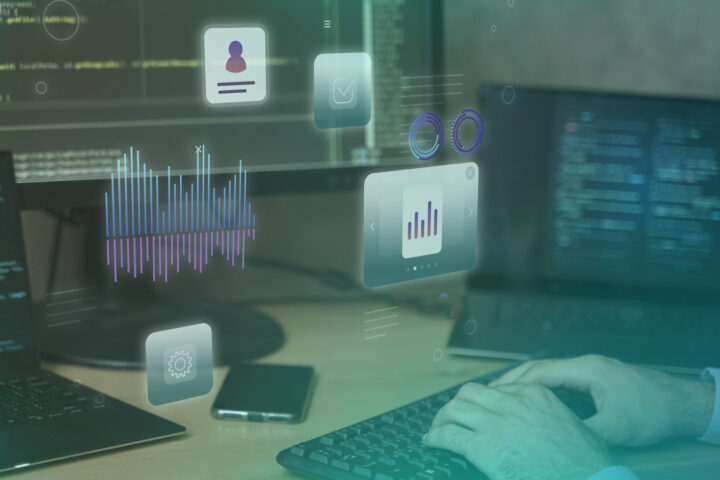Digital Transformation Solutions
Transform your IT infrastructure and deploy scalable digital solutions with Simelabs. Our expert team equips you with the tools to become an industry leader, with customer-focused solutions that add value, build relationships, and boost revenue. From streamlining operations to enhancing customer experiences and driving sales growth, our cutting-edge digital solutions deliver results. Contact Simelabs today to learn more about our services and how we can help you achieve your business goals.
-
Data Engineering and Data Science
Do more with data and transform your business
-
Technology & Engineering
Build platforms that create new opportunities and accelerate business value
-
Robotics
Augment your task and simplify workflows
-
Cloud and Application Services
Digital transformation with a cloud-first approach
-
Business Consulting
Realize value from your digital innovation strategies
-
Blockchain & IoT
Harness Blockchain with real-world applications
-
Artificial Intelligence
Accelerate your AI journey
-
AR, VR and MR
Do more with what you see
-
Embedded Services
Embedded Services
How we cooperate
To meet your unique requirements, we offer three distinct engagement models. Choose the ideal way to structure our partnership.
Engineering Team
We take on a wide range of responsibility by designing and co-creating a product with you. We manage the entire product development life cycle from planning to implementation to support and maintenance.
Smart Team
If you need help with just one of the services such as design, development, QA or DevOps, we can easily provide you with a team of specialists. With this type of collaboration, work processes and delivery are fully managed by us.
Extended team
We provide you with a team (or one specialist) who has the expertise you’re looking for, and we take responsibility for the performance of these individuals or teams. You have full control of the systems development life cycle (SDLC).
Distributed responsibilities.
One common goal.
Each member of the Simelabs team has their own responsibilities, but we all work toward a common goal: providing you with software services and solution that is the most beneficial for your businesses.
Customer
- Budget
- Backlog
- Quality requests
- Domain knowledge
- Business development
Product
- Design
- Architecture
- Maintenance
- Infrastucture
- Development expertise
Company
Continuous Software Development Life Cycle
At Simelabs, we believe in Continuous software development. Rather than improving software in one large batch, updates are made continuously, piece-by-piece, enabling software code to be delivered to customers as soon as it is completed and tested.
Continuous Exploration
A process that drives innovation and fosters alignment on what should be built by continually exploring the market and customer needs, and defining a Vision, Roadmap, set of features and services for a solution that addresses those needs
Continuous Integration
The practice of integrating changes from different developers in the team into a mainline as early as possible, in best cases several times a day. This makes your code dependable
Continuous Delivery
We keep the codebase deployable at any point. Beyond making sure the application passes automated tests it has to have all the configuration necessary to push it into production. Teams then do push changes that pass the automated tests into a test or production environment
Continuous Deployment
We use the strategy of continuous deployment for software releases wherein any code commit that passes the automated testing phase is automatically released into the production environment, making changes that are visible to the software's users
Continuous Feedback
Infrastructure, application & database are automatically scaled up & down based on demand. Feedback detects abnormal behaviour & switches over automatically before critical failure occurs
Continuous Learning
Continuous learning will only strengthen any DevOps environment you implement. Expected and actual customer impact is evaluated, the learnings trigger a new hypothesis and start the next code experiment
Our philosophy in product design & development
We believe in creating digital customer experiences that people love and clients are proud of calling their own.
Discovery
As the old saying goes: If you have four hours to chop down a tree, spend the first three hours sharpening your axe. The same goes for design. Before you get started with any project, you need to get the basics down firstResearch about everything that we are curious about the users and the case. The final goal is putting ourselves in user’s shoes and understanding their problems and what they need.
Ideation
From the problem worth solving, list down the negative feelings when the problems are unsolved (left) , and the positive feelings when the problem solved (right). Based on the feelings, think about the solution for that.
Create
Now, it’s time to actually build out your design. One of the most important things you can create at this stage is the wireframe. It’s a low fidelity version of what your product will eventually look like. This is an iterative process. That means you won’t get it all done in the first go. You’ll have to design, redesign, scrap it, and design it all again. Hyperventilation and overconsumption of coffee is completely natural at this stage.
Launch
After designing and redesigning until you go cross eyed, you’re going to reach a point where all your assets are ready to ship. That means it’s time to implement; pass everything to the development team who will create a high fidelity version of the user interface.
Iterate
Once your product launches, it’s time for another round of analysis. Instead of looking at the results of your research, though, you’ll be taking a look at your overall final product.By thoroughly analyzing the product and the UX process, you’ll be able to get more out of the experience than just a product—you also gain invaluable knowledge you can leverage for the future.


